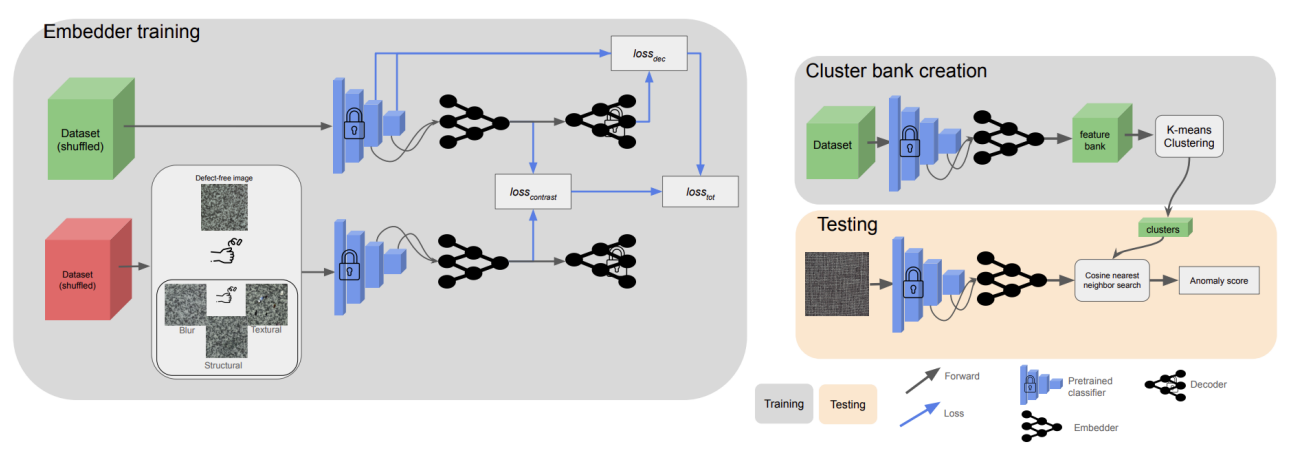CSE: Surface Anomaly Detection with Contrastively Selected Embedding
Detecting surface anomalies of industrial materials poses a significant challenge within a myriad of industrial manufacturing processes. In recent times, various methodologies have emerged, capitalizing on the advantages of employing a network pre-trained on natural images for the extraction of representative features. Subsequently, these features are subjected to processing through a diverse range of techniques including memory banks, normalizing flow, and knowledge distillation, which have exhibited exceptional accuracy. This paper revisits approaches based on pre-trained features by introducing a novel method centered on target-specific embedding. To capture the most representative features of the texture under consideration, we employ a variant of a contrastive training procedure that incorporates both artificially generated defective samples and anomaly-free samples during training. Exploiting the intrinsic properties of surfaces, we derived a meaningful representation from the defect-free samples during training, facilitating a straightforward yet effective calculation of anomaly scores. The experiments conducted on the MVTEC AD and TILDA datasets demonstrate the competitiveness of our approach compared to state-of-the-art methods.
PDF AbstractDatasets
| Task | Dataset | Model | Metric Name | Metric Value | Global Rank | Benchmark |
|---|---|---|---|---|---|---|
| Anomaly Detection | MVTEC AD textures | CSE | Detection AUROC | 99.8 | # 2 |





 MVTecAD
MVTecAD
